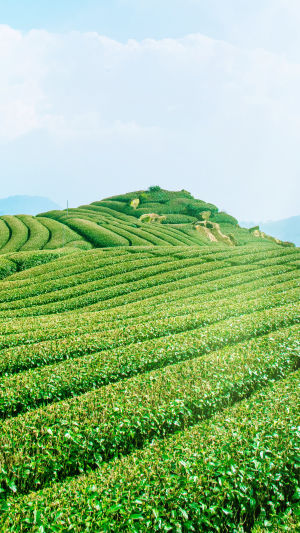We often refer to tea gardens in two ways: as places for cultivating tea leaves and as venues for tea consumption and leisure activities.
The construction of tea gardens mainly involves sections such as tea culture exhibition halls, tea art performance spaces, and tea-tasting halls.
The tea culture exhibition hall showcases tea's origins, development, cultural significance, role in ethnic unity, impact on human health, and comprehensive use.
Merely indulging in tea drinking, admiring, or purchasing seems somewhat monotonous. To make tea gardens profitable and merge them with the tourism industry, leveraging the "tea garden+" concept is essential. Integrating various industries into tea gardens diversifies tourism experiences, preventing them from being one-dimensional. If the local tea industry can create a cluster effect, it can establish a "tea-themed" cultural town.
Sightseeing is a fundamental aspect of tourism. The layered hills, lush tea gardens, abundant greenery, and refreshing ambiance offer tourists a visual feast of greenery.
Tea gardens can leverage their abundant tea mountains and natural landscapes, creating unique tea garden landscapes to form a base for photography enthusiasts.
Sharing these photos on social media and online creates effective word-of-mouth publicity.
Currently, with a trend towards reconnecting with nature for leisure vacations, urban dwellers often opt for eco-tourism, making ecological tea gardens highly attractive tourist resources.
Research indicates that areas with high tea consumption correlate with regions of longevity. For instance, Shizuoka Prefecture in Japan, known for its tea, boasts high tea consumption and, consequently, increased life expectancy compared to the national average.
Tea gardens can develop a range of tea-based leisure and health products. Integrating tea tourism with expanding elderly care services plays a role in promoting health and wellness. Developing in line with the integration of scenic tea areas and tea-based health services promotes synergy between the wellness and tea industries.
In Japan's Uji region, the emphasis initially lay on branding tea and leveraging it to drive tourism. This involved meticulous packaging design and the picturesque cultivation of tea fields. Prioritizing the aesthetics of photography was crucial. Themed exhibitions displaying the tea-making process and mentoring on the tea ceremony by experienced individuals contribute to a unique experience within tea gardens.
The construction of ecological tea gardens yields significant economic, social, and environmental benefits. These include enhancing tea quality and sales prices, improving the ecological environment by preserving water sources, and promoting land environmental conservation. Additionally, tea garden construction enhances local farmers' income, quality of life, and job opportunities and drives rural economic development.
As China's economy and living standards improve, the demand for tea rises, enlarging the domestic market. Consequently, ecological tea garden construction enhances tea quality. It promotes healthier, energy-efficient, eco-friendly tea production lines that cater to consumers' growing demand for eco-friendly, safe, high-quality products.





